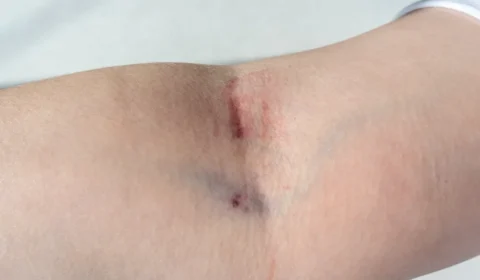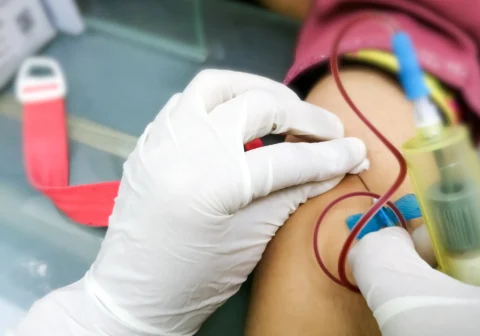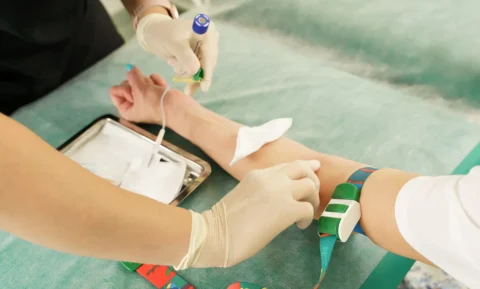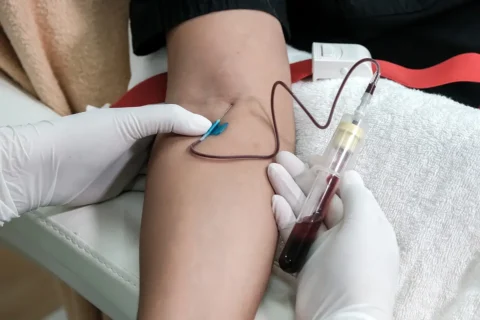Choosing the Right Tool: A Comprehensive Comparison of Blood Draw Methods
In today’s fast-paced healthcare world, getting things done efficiently without compromising quality is the name of the game. Drawing blood is one such routine yet crucial task. While many of us might immediately think of the butterfly needle (thanks to its widespread use), it’s not the only tool in the shed.
While the butterfly needle is super handy and flexible, it’s essential to remember there are other effective methods too. Depending on the situation, whether it’s the type of test or the comfort level of the patient, different tools might be the better fit. It’s all about having options and knowing when to use them to get the best results.
Straight Needles: A Comprehensive Overview
Drawing blood is a foundational process in healthcare. Among the tools used for this procedure, straight needles—often referred to as evacuation system needles—hold significant importance. Unlike their more flexible counterpart, the butterfly needle, straight needles have a certain robustness to them which, in many situations, is an advantage.
How Straight Needles Function
Known for their rigidity, straight needles are a staple in the realms of both blood draws and IV insertions. These needles are not only larger in gauge but are also designed for those patients blessed with veins that are either more pronounced or easily accessible.
Pre-attached to either a syringe or a tube holder, using the straight needle is simple: once it gains entry into the vein, it permits the blood to channel directly into its attached container. The beauty of straight needles lies in their versatility, as they come in varied gauges tailored for diverse patients and situations.
The Advantages of Straight Needles
- Efficiency: The design and build of straight needles make them conducive for swift and efficient blood collection.
- Diversity: Their availability in a range of gauges ensures adaptability across a variety of scenarios.
- Appropriateness: Owing to their structure and larger gauge, these needles fit the bill perfectly for patients whose veins are more prominent.
While straight needles bring a lot to the table, they’re not without their challenges. They might necessitate multiple venipuncture attempts, amplifying patient discomfort. For healthcare providers, there’s the ever-present risk of needle stick injuries, making safety paramount.
Furthermore, the procedure can hit a snag if the needle’s positioning isn’t optimal. Too deep, and it might traverse through the vein. Too shallow, and it might result in sluggish blood flow. It’s also crucial to ensure the vein remains steady during insertion to avoid any misalignment.
Key Components of Straight Needles
| Component | Description | Variability |
| Needle | The primary instrument that pierces the vein for blood extraction. | Gauges vary, with 21g being prevalent for routine draws. |
| Syringe | Attached directly to the needle, it is responsible for holding and storing the drawn blood. | Its size depends on the volume of blood to be collected. |
| Tourniquet | Ensures optimal blood flow by making the veins more visible and accessible. | Size is based on the individual’s arm size. |
| Alcohol Swab | Preps the skin, ensuring a sanitized drawing site and reducing the risk of infections. | Standard for all procedures. |
| Gauze Pad | Provides a means to control bleeding after the needle is removed. | Commonly used post-procedure. |
Supplementary Supplies
While straight needles and their core components are pivotal, several additional tools are typically used alongside to ensure safety and efficiency:
| Supply | Purpose |
| Bandages | Employed to cover and protect the puncture site following the procedure. |
| Disposable Gloves | A standard safety protocol to prevent potential exposure to bloodborne pathogens. |
| Sharps Container | A safety measure for the disposal of used needles and similar sharp items. |
Selecting the Right Needle Gauge for Blood Drawing
The gauge of the needle plays a significant role in ensuring a smooth blood-drawing experience. Among the array of available gauges, the most commonly employed ones are 18g, 21g, 22g, and 23g. While 21g is a go-to for most routine blood drawings, 22g, and 23g cater to smaller and more delicate veins.
On the other hand, 18g needles are a preferred choice for rapid blood collection and transfusions. Recognizing that each gauge has specific blood flow rates and vein compatibility is crucial for healthcare professionals.
Drawing Blood with a Straight Needle: A Step-by-Step Guide
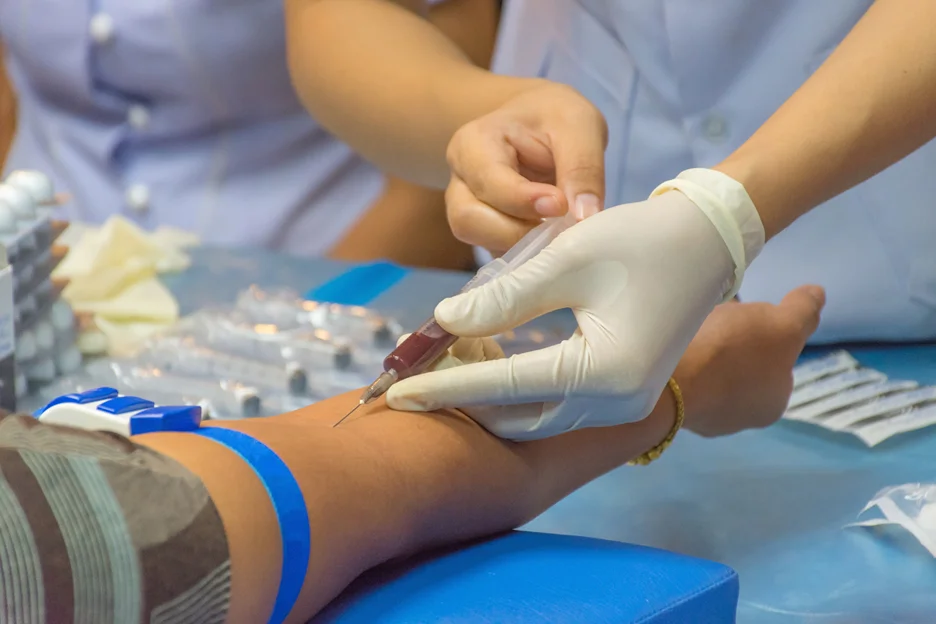
After choosing the correct needle choice, here is a clear breakdown of the steps involved in using a straight needle:
- Preparation Phase: Begin by assembling all the essential supplies. Discuss the upcoming procedure with the patient to set expectations. Prioritize hand hygiene and ensure you’re wearing the right personal protective equipment (PPE).
- Vein Selection: Dedicate time to identify the optimal vein for the draw. An ideal vein is visible, palpable, and free from any complications.
- Using the Tourniquet: Secure a tourniquet around the patient’s upper arm. This temporary constriction amplifies the visibility of veins, easing the drawing process.
- Site Sanitization: Thoroughly clean the selected puncture site. Using an alcohol wipe, clean in an outward circular motion for about 30 seconds, ensuring a sterile environment for the procedure.
- Needle Insertion: With confidence and precision, puncture both the skin and the vein using a straight needle. Maintain an angle between 15 to 30 degrees for optimal entry.
- Blood Collection: Upon successful insertion, you’ll witness a ‘flash’ indicating the presence of blood in the needle’s tubing. At this juncture, either attach vacutainers or employ a syringe to collect the sample.
- Post-Procedure: Once the sample is acquired, label the tubes appropriately. It’s crucial that these samples are forwarded to the laboratory accurately for valid analysis.
It’s noteworthy to mention that while straight needles are effective, they might not be the preferred choice for every individual.
Patients with petite or delicate veins might find the butterfly needle more accommodating. Always prioritize the patient’s comfort and the procedure’s efficacy when choosing a method.
Safety Precautions When Drawing Blood with a Straight Needle
Ensuring safety is paramount during any medical procedure, especially in the straightforward yet intricate task of drawing blood. The following precautions not only guarantee the safety of the patient but also uphold the integrity of the collected sample:
- Allergy and Sensitivity Checks: Before beginning, confirm if the patient has any known allergies or sensitivities, especially to elements commonly used in the procedure like antiseptics, adhesives, or latex.
- Post-Draw Care: Once the needle is removed, press firmly on the puncture site. This dual action not only halts bleeding but also deters the formation of hematomas.
- Needle Extraction: When it’s time to retract the needle, employ a brisk backward motion. This minimizes discomfort and reduces the chances of any complications.
- Disposal of Materials: Maintain a hygienic workspace by promptly disposing of any used or contaminated materials in the appropriate designated containers. This step is integral to infection control.
- Minimize Trauma: Aim to get the procedure right on the first try. Avoid unnecessary trauma to the patient’s veins by refraining from excessive probing.
- Limit Venipuncture Attempts: A golden rule in phlebotomy is to not attempt venipuncture more than twice on a patient. If both tries are unsuccessful, it’s advisable to notify a supervisor or the concerned physician.
- Selecting the Ideal Draw Site: There are areas to steer clear of when drawing blood. Refrain from choosing an arm on the same side as a previous mastectomy. Likewise, avoid arms with medical apparatus like a cannula, fistula, or vascular graft. It’s also best practice to not draw blood from a location directly above an intravenous (IV) site.
By adhering to these safety precautions, healthcare professionals can ensure a smooth blood draw procedure, mitigating risks and ensuring the comfort and well-being of their patients.
Other Alternatives to Straight Needles for Blood Collection and IV Access
When it comes to accessing the vascular system for drawing blood or administering medications, straight needles are commonly used. However, various clinical scenarios might necessitate alternative methods. Here are some of the prevalent alternatives:
Cannulas or Catheters
For patients who need extended access to their veins, often because they’re receiving IV medications over a period of time, cannulas or catheters become the tool of choice. Two commonly used types of catheters include:
- Peripheral Intravenous Catheters (PIVCs): These are short, usually ranging from 1.25 to 1.88 inches, and are meant for the peripheral veins. The forearm is a typical site. They’re ideal for short-term IV therapy.
- Long Peripheral Catheters (LPCs): A tad longer, they range from 2.36 to 5.91 inches. The Seldinger technique aids their insertion. When a patient’s veins are tricky to access, or multi-day IV therapy is on the cards, LPCs often come into play. Both adults and children find them safe and reliable.
Fingerstick or Heelstick Methods
When only a small volume of blood is required, or when dealing with pediatric patients, the fingerstick or heelstick methods prove valuable:
- Fingerstick: For children aged over 18 months requiring less than 2.5 mL of blood, this method is suitable. It typically involves drawing blood from near the tip of the third or fourth finger’s side.
- Heelstick: Infants up to 18 months are candidates for this method. The blood is sourced from the heel’s plantar surface, particularly its outer portion.
What makes these methods favorable is their minimally invasive nature, which translates to reduced pain and stress for the patient.
They’re a boon for those with challenging veins or those undergoing regular blood tests. Still, it’s essential to remember that they’re most effective when capillary blood suits the tests in question.
For both techniques, it’s fundamental to cleanse the site with an antiseptic wipe and let it air dry before making the puncture. Once the blood is collected in the designated container, ensuring pressure is applied to halt any bleeding is crucial.
Remember, the method chosen should always prioritize patient comfort, the required blood volume, and the specific clinical scenario at hand.
Choose FACE Med Store for Premium Medical Supplies

In the dynamic field of medical procedures, understanding the nuances such as the precision of needle placement, adhering to sterile techniques, and the timely engagement of safety features is of the utmost importance. Such meticulousness not only ensures quality specimen collection but also significantly reduces potential complications.
Being conversant with advanced tools, like safety needles equipped with automated retraction technology, is a step towards fostering a safe and efficient environment. When this knowledge is paired with comprehensive training, the potential risks are greatly minimized.
FACE Med Store stands as your trusted partner in this journey. We proudly offer a range of top-tier safety needles and comprehensive blood collection kits, enabling medical professionals to carry out critical diagnostic procedures with utmost confidence and safety.
Reach out to FACE Med Store today, and elevate the standards of your medical toolkit!
